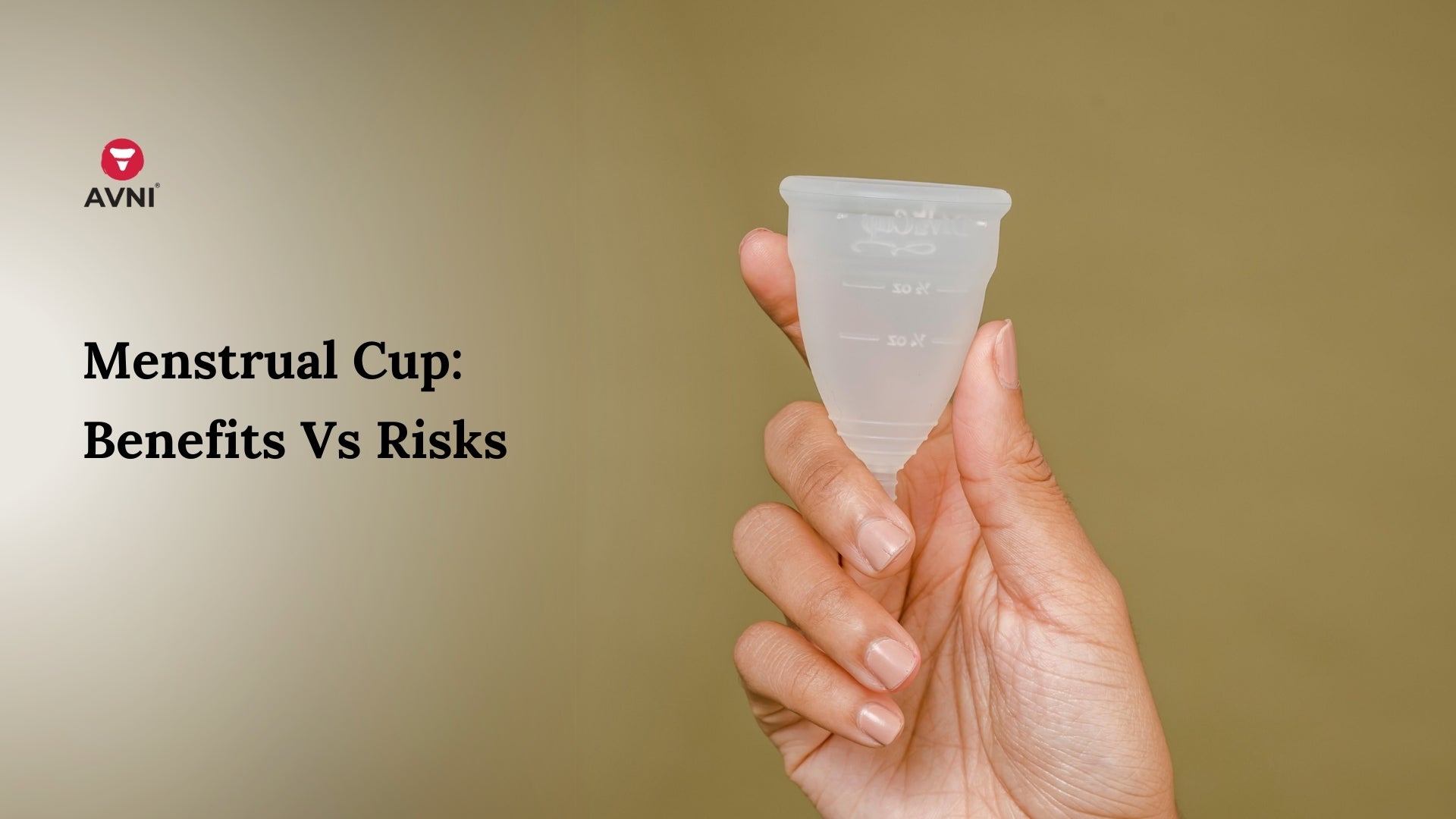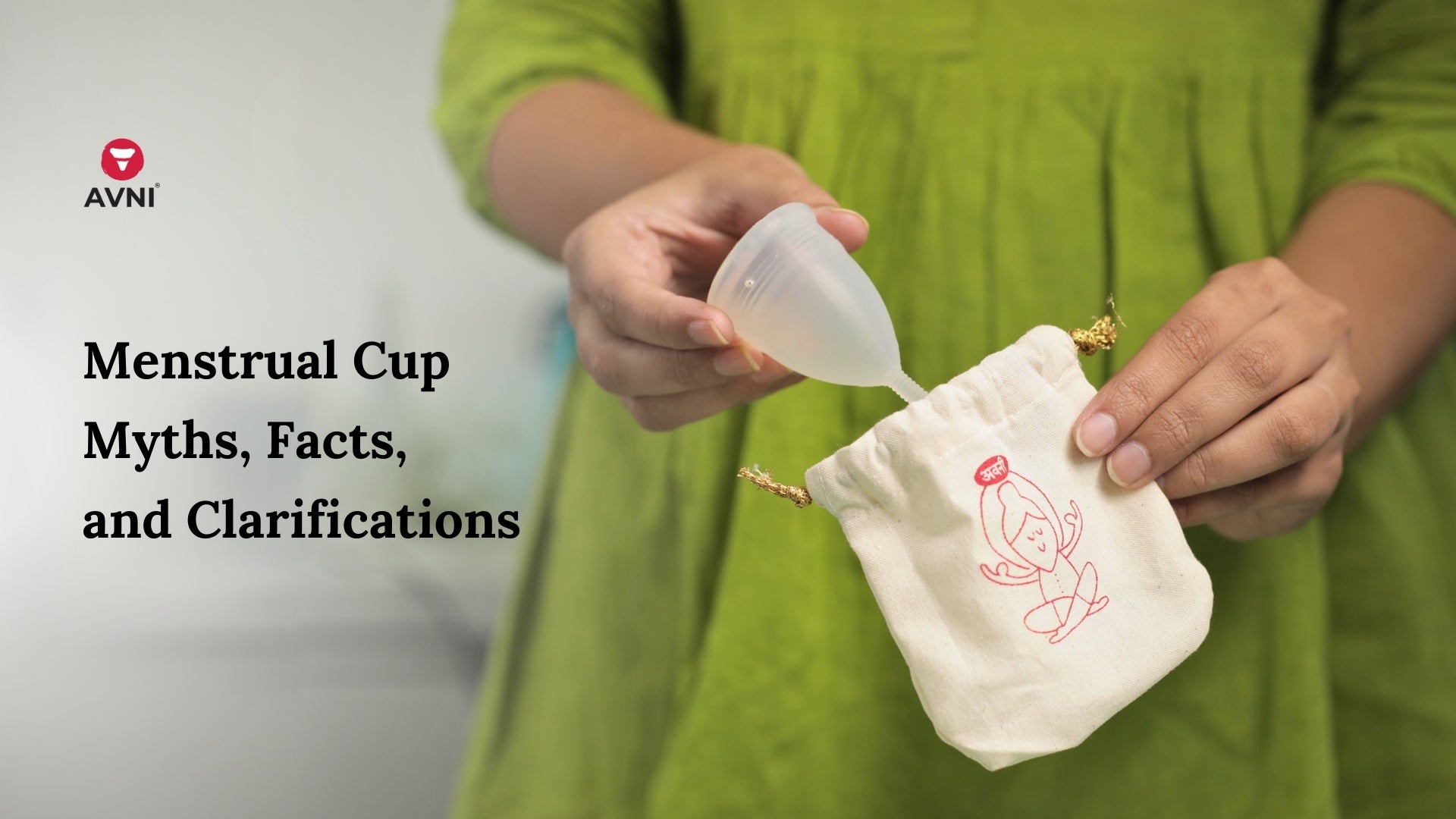
Vaginal Infection: Types & Prevention Tips
A hot weather, insufficient hygiene, tight clothes or overall lapse in menstrual hygiene are all indicative of a vaginal infection. Vaginal infection or vaginitis is a condition that often leads to a bacterial build up or inflammation in the region - namely the vagina as well as the vulva.
Vaginal infections are usually marked by itchiness, irritation, discharge, soreness and many other causes. These are pretty common occurrences and teens or women in their early 40’s are especially susceptible to them.
Women in their reproductive years are very likely to develop vaginal infection, especially during pregnancies and it is therefore, very important for expecting mothers to prioritise intimate hygiene.
Urban women suffer vaginal problems in silence: As per a survey, many urban women, despite their exposure, are more likely to hush up their vaginal problems and suffer in silence. A survey conducted in the major cities of Mumbai, Delhi and Bengaluru indicates that vaginal problems affect the quality of life of 45% of women and 50% of them prefer to suffer in silence.

How do Vaginal Issues Impact Daily Life?
Vaginal issues are not limited to physical maladies but have an emotional and mental impact as well. The recurring symptoms of these vaginal infections have a negative impact on the quality of life as well. Some of the common issues arising are:
- Frustration
- Mood fluctuations
- Intimacy changes in relationships since the foul smelling vaginal discharge contributes to shame which may lead to a fleeting attitude towards sexual activities and closeness.
- Reproductive health issues which leads to further anxiety
Many times, these emotional instability is caused due to vaginal problems being taboo and underserved problems. Women with vaginal issues tend to be socially reclusive, embarrassed about the odour or any discomfort that might be visible to a third person.
What are the Most Common Vaginal Infections?
- Bacterial Vaginosis
- Candida
- Chlamydia
- Gonorrhoea
- Trichomoniasis
- Herpes Simplex Virus (HSV)
- Hepatitis B (HBV)
- Human Papillomavirus (HPV)
- Human Immunodeficiency Virus (HIV)
- Vulvodynia: Persistent Pain Around the Vulva

What is Vaginitis?
Simply put, Vaginitis is the inflammation of the vagina. Not to be taken lightly, Vaginitis is the rudimentary term for inflammation of the vagina but the actual disorder can vary vastly.
Caused by an imbalance of the normal bacteria & yeast that dwell in the vagina, various day-to-day culprits could lead to Vaginitis. Culprits like soap chemicals, clothing, sprays, even the chemicals in sanitary pads & tampons could cause Vaginitis.
Figuring out the reason behind the infection is key and you can do this by eliminating one product at a time until you zero in on a definitive product that is causing the inflammation.
With that said, it is easier said than done to figure the reason behind the infection, in which case, consulting a doctor is the best resolution.
Nevertheless, it is best to be equipped with the knowledge of some of the most common types of Vaginitis, as women between the age groups of 14 to 50 are bound to contract an infection at least once in their lifetime.
Types of Vaginitis
While some of the Vaginitis are infections, some can be STIs (sexually transmitted infections) so here are some of the most common kinds of Vaginitis, and how to identify them.
1. Bacterial Vaginosis (BV): As the name tells, BV is simply the overgrowth of bacteria in the vagina.
Symptoms: There is inflammation in the vulva and BV usually carries a strong fishy odor which is a telltale sign of it. Other than this, women infected with BV usually notice a greyish or white discharge from the vagina.
Causes: Even though BV is not an STI, it can certainly be transmitted from one partner to the other sexually. The other causes include multiple sex partners, a lack of lactobacilli bacteria in the system natural, and douching.
Prevention: Using non-deodorizing soaps, unscented sanitary pads, maintaining ideal pH levels, avoiding overcleaning the vulva which disrupts the pH balance, using latex condoms, limiting sexual partners, and other practices can be used to prevent BV.
Statistic: In the United States, out of all the women tested for Vaginitis, 29.2% of them were diagnosed with BV. This is a staggering statistic that points to how common BV is.
2. Candida: Also colloquially known as “yeast” infection, Candida is the second only culprit that leads to Vaginitis. The overgrowth of the fungus candida in the vagina results in yeast infection.
Symptoms: An infection that occurs in men & children as well, a vaginal yeast infection symptoms commonly are itching, yellow or white discharge, burning sensation, redness in the vaginal exteriors. Other symptoms include fatigue, recurring urinary infections, sinus infections, digestive issues, joint pain, etc.
Causes: Candida overgrowth can be caused when you have a high carbohydrate diet, chronic stress, excessive alcohol consumption, ingesting fermented foods, and some autoimmune diseases.
Prevention: Candida can mostly be avoided by eliminating the aforementioned bad eating & drinking habits, keeping your skin dry & clean, and leading a healthy lifestyle. Keeping the fungus from overgrowing is key so these are the most effective methods to do so.
Statistic: It is estimated that around 75% of all women experience a yeast infection at least once in their lifetime so it is needless to say that it is common and medical science can help you get rid of it easily
3. Chlamydia: Now we are in the sexually transmitted disease portion of vaginal infections and chlamydia is a common STI. Caused by the bacteria known as Chlamydia trachomatis, Chlamydia may occur in the rectum, cervix, or even the throat.
Symptoms: Some of the most common symptoms of Chlamydia are yellowish discharge from the vagina, pain while urinating, pain during sexual intercourse, bleeding other than during the period cycle, bleeding after sex in women, lower stomach pain, and others.
Causes: As mentioned earlier, Chlamydia trachomatis is a bacteria that causes the infection. The infection occurs due to unprotected sexual intercourse. The infected person may spread to it their partners through oral, anal, or conventional sexual intercourse.
Prevention: The best method to prevent Chlamydia is to use a condom every time during sexual intercourse. The sexual act may be vaginal, anal, or oral, a condom provides the best protection against contracting Chlamydia. Other than avoiding unprotected sex, Chlamydia is common amongst people between the age groups of 18 and 35 so avoiding multiple sex partners at a time also helps prevent the disease.
Statistics: A CDC study shows that 1 in every 20 sexually active women contract Chlamydia between ages 14 and 24 so it is imperative to spread awareness of the disease in teenagers. Known to be prevalent in the youth, two-third of all new Chlamydia infections are detected among youngsters between 15 to 24 years of age.
4. Gonorrhoea: Often accompanied by Chlamydia, Gonorrhoea is also an STI that is caused by the bacterium Neisseria gonorrhoeae. Affecting the cervix, urethra rectum, and throat, this STI evidently spreads through vaginal, anal, or oral sexual acts.
Symptoms: Gonorrhoea symptoms in women range from painful urination, burning sensation while urinating, unusual or increased vaginal discharge, vaginal bleeding between periods, abdominal pain around the pelvis, and bleeding after vaginal intercourse.
Causes: The bacterium Neisseria gonorrhoeae is passed from one person to the other during sexual contact. This sexual contact may be vaginal, oral, or anal, bacterium Neisseria gonorrhoeae thrives and spreads effortlessly from person to person.
Prevention: Other than various other contraceptives, using a condom during sexual acts is the most effective way to prevent Gonorrhea. Limiting the number of sexual partners, getting tested for STIs before sexual acts, and regular screening for the infections are the best ways to prevent Gonorrhea.
Statistic: An estimated 87 million cases of Gonorrhoea were reported in the year 2016, worldwide. Occurring between ages 15 to 49, an incidence rate of 26/1000 men and 20/1000 women were tested positive for Gonorrhoea.
5. Trichomoniasis: Commonly called “trich” is an STI that is caused by a one-celled parasite. Increasing the risk of other STIs, untreated Trichomoniasis parasites can easily spread to other organs and disrupt normal functions.
Symptoms: General symptoms of Trichomoniasis are itchiness, burning sensation, soreness, and redness. The notorious parasite can cause vaginal discharges that are clear, yellow, white, green, and usually has an unusual fishy stench.
Causes: Like all other STIs, Trichomoniasis is caused mainly due to unprotected sexual acts. This protozoan parasite infests the lower genital tract in women like the vulva, cervix, vagina, or urethra. Spreading from penis to vagina, vice versa, and also from the vagina to vagina, Trichomoniasis does not generally infest the mouth, anus, and hands like other STIs.
Prevention: Using latex condoms is yet again the solution to protect yourself and your partner from Trichomoniasis. Monogamous relationships without multiple sexual partners is another way to avoid Trichomoniasis. Getting yourself and your partner tested for Trichomoniasis is an effective way as well.
Statistic: According to the WHO, Trichomoniasis infections were numbered at around 220 million cases but this estimate is questionable. But as of 2008, 276 million cases were registered in a calendar year, and this was between ages 15 to 49.
Note: We are now moving from bacterial & parasitical vaginal infections to viral infections that are significantly more dangerous when contracted. So ensure to glance through the symptoms and the ways to prevent them carefully.
Viral Vaginitis
Now we know that Vaginitis is the inflammation of the vagina but it can be caused either due to bacteria or viruses (sometimes parasites). Although bacterial viruses are some of the most commonly found vaginal infections, viral infections result in more severe symptoms and sometimes modern medicine does not have a cure for them; case in point, HIV.
1. Herpes Simplex Virus (HSV): HSV, commonly known as “herpes” is the infamous viral STI that plagues the world over. Causing blisters, outbreaks, and other genital infections, herpes is divided into HSV-1 and HSV-2.
While HSV-1 is transmitted from mouth to mouth while kissing, HSV-2 is a quintessential viral STI which is also known as genital herpes.
Symptoms: People who have contracted herpes don’t show symptoms for the most part or mistake them for other dermatological issues. With that said, symptoms of herpes could range from itching, pain while urinating, vaginal discharges, tender lumps in the groin, painful sores in the thighs, anus, buttocks, mouth, and genital area. Herpes may also cause fever and fatigue.
Causes: Unlike earlier-discussed infections, herpes is more contagious as it can spread not only via sexual acts but also from skin to skin. Kissing is also a usual way herpes is transmitted.
Prevention: Using dental dams to prevent oral herpes, and condoms to prevent genital herpes are the safest routes to take.
Statistic: Around 3.7 billion people, which is more than half the world population are said to have HSV-1 infection. This statistic identifies people under the age of 50 only, yet, this is a mind-blowing number indeed.
2. Hepatitis B (HBV): As mentioned earlier, viral vaginal infections are nothing short of life-threatening and Hepatitis B is one such disease that could easily take a life if not diagnosed and treated quickly.
When semen, blood, and other body fluids enter from an infected person’s body to a healthy person HBV virus is spread.
Symptoms: Dark urine, joint pain, fever, stomach pain, nausea, loss of appetite, vomiting, fatigue, yellowing of the skin, and whitening of the eyes are the most common symptoms of HBV.
Causes: Direct blood to blood contact, direct contact with sexual fluids, sharing razors, toothbrushes, earrings, and others may also cause HBV. Needless to say, sharing syringe needles, tattoos, piercings, and bad circumcision practices also cause HBV.
With that said, unprotected sexual intercourse is still one of the most common causes of HBV.
Prevention: HBV can be prevented by getting the hepatitis B immune globulin (HBIG) vaccination. It can also be prevented by taking ideal care of your hygiene, without sharing razors, toothbrushes, and everything else mentioned in the ‘causes’. Safe sexual acts using a latex condom can also prevent the transmission of HBV.
Statistic: A total number of 2 billion people have been infected with HBV worldwide at an approximate rate of 1.5 million people each year.
3. Human Papillomavirus (HPV): With over 100 varieties of HPV viruses rampaging the global population, it pays to know more about this deadly viral disease. Passed from a person to person via skin contact, HPV is extremely easily spread via sexual contact. Affecting the genitals, throat, mouth, and anus alike, there are more than 40 types of HPV STIs lurking around.
IMPORTANT: HPV can cause cancer of the cervix, vulva, vagina, penis, throat, or anus.
Symptoms: Raised bumps, rough warts, pain during sex, pain in the pelvic area, unusual vaginal discharge, bleeding between periods, and bleeding after sex.
Causes: Skin-to-skin contact is one of the most common ways HPV is transmitted. Vaginal, oral, or anal sex without protection is as common as skin-to-skin contact.
Prevention: Using dental dams, condoms, and practicing safe sex is ideal but getting the HPV vaccine is the best way to prevent the deadly disease which otherwise may lead to cancer.
Statistic: According to the CDC, there were 13 million new cases of HPV in the year 2018, and the total number was 43 million infected people.
4. Human Immunodeficiency Virus (HIV): It is needless to stress how important it is to be protected against HIV which still doesn’t have a permanent cure even after many decades. Predominantly known to prevail & spread in third world countries, it would shock you to know how common it is in your own neighborhood, regardless of the geography you live in. More stats on this, below.
Symptoms: Rash, chills, fever, night sweats, sore throat, fatigue, muscle aches, swollen lymph nodes, are some of the most common HIV symptoms.
Causes: Known as the deadliest sexually transmitted disease, HIV can be transmitted by having unprotected sex, sharing needles, blood transfusions, during pregnancy, labor, or even breastfeeding.
Prevention: Being monogamous, using condoms, getting tested frequently, getting vaccinated, avoiding douches, avoiding drugs & alcohol, and avoiding unhygienic tattoo salons are some of the ways to prevent yourself from contracting HIV.
Statistic: A staggering 37.7 million across the world were known to be living with HIV as of 2020. Between 480,000 and 1 million people have died due to HIV just in the year 2020.
5. Vulvodynia: Persistent Pain Around the Vulva: Chronic pain around the vulva, the Vulvodynia is usually identified as a burning sensation around the genitals. It is also sometimes recognised as stinging and incessantly itchy. The pain usually lasts for three months and does not have a viable cause yet.
Symptoms: Very little is known about vulvodynia and has many speculative symptoms. Some of these include nerve injury in the genital region, hormonal issues, inflammation, and genetic problems to name a few.
Prevention: Medical intervention including treatments like oral medication, physical therapy, topical medications, counselling, vestibulectomy (localised surgical procedure to remove the tissue in the pain region), and nerve block.
Preventing Itchiness & Odour
Vaginal itchiness and odour may seem like two different issues altogether but they’re different sides of the same coin.
Preventing Itchiness
- By avoiding scented toilet paper, sanitary pads, tampons, menstrual cups, and using organic substitutes may immediately show desired results, reducing itchiness completely.
- Avoiding scented creams, bubble baths, bath bombs, hygiene sprays, douches, and replacing them with herbal/organic/biodegradable works wonders.
- Wiping from front to back and not the other way around can avoid unnecessary bacteria from permeating from the anus to the vulva.
- Avoiding synthetic panties and wearing cotton ones can do the trick.
- Avoid over-cleaning the vaginal area but also maintain hygienic moisture.
- Maintain ideal pH balance between 3.5 and 4.5 by using herbal/organic feminine cleanses.

Preventing Odour
- Use exterior deodorising products only
- Keep hydrated, drink ample water, every day
- Maintaining a healthy diet always helps
- Maintain a healthy prebiotic and probiotic diet that helps you maintain the right pH balance.
- Avoid scrubs and douches
- Wear loose clothes and avoid tight ones
- Wear cotton panties and avoid synthetic ones
- Bathe regularly but avoid over-cleaning the vulva
- Wash the vulva before and immediately after sexual intercourse

Buy Intimate Care Product that Prevents Vaginal Infection
It is needless to say that good hygiene and the usage of latex condoms prevent most vaginal infections so start today. Regardless of how close you are to someone, it always pays to exercise caution, and maintaining the right pH (3.5 - 4.5) balance is better than intensely washing your privates.
This is why it is recommended that you go for plant based intimate wipes and wash that not only clean your privates but also ensure that you have a sustainable and eco-friendly personal hygiene.
Avni’s water based and pH balanced intimate care wipes are perfect partners for a healthy intimate care routine while you are travelling or at home. Packed with soothing effects of aloe vera and tea tree extracts, these wipes are a must for your personal hygiene and self-care routine.

FAQs
1. How do you know if you have vaginal infection?
Vaginal infection is usually marked by following symptoms:
- Irritation and inflammation
- Unusual amount of discharge
- Soreness and itchiness
- Pain during sex or urination
2. What are the different types of vaginal infections?
- Bacterial Vaginosis
- Candida
- Chlamydia
- Gonorrhoea
- Trichomoniasis
- Herpes Simplex Virus (HSV)
- Hepatitis B (HBV)
- Human Papillomavirus (HPV)
- Human Immunodeficiency Virus (HIV)
- Vulvodynia: Persistent Pain Around the Vulva
3. Do I have vaginal yeast infection?
If you have itching, yellow or white discharge, burning sensation, redness in the vaginal exteriors which are sometimes combined with fatigue, chances are you might have yeast infection.



Leave a comment
This site is protected by hCaptcha and the hCaptcha Privacy Policy and Terms of Service apply.